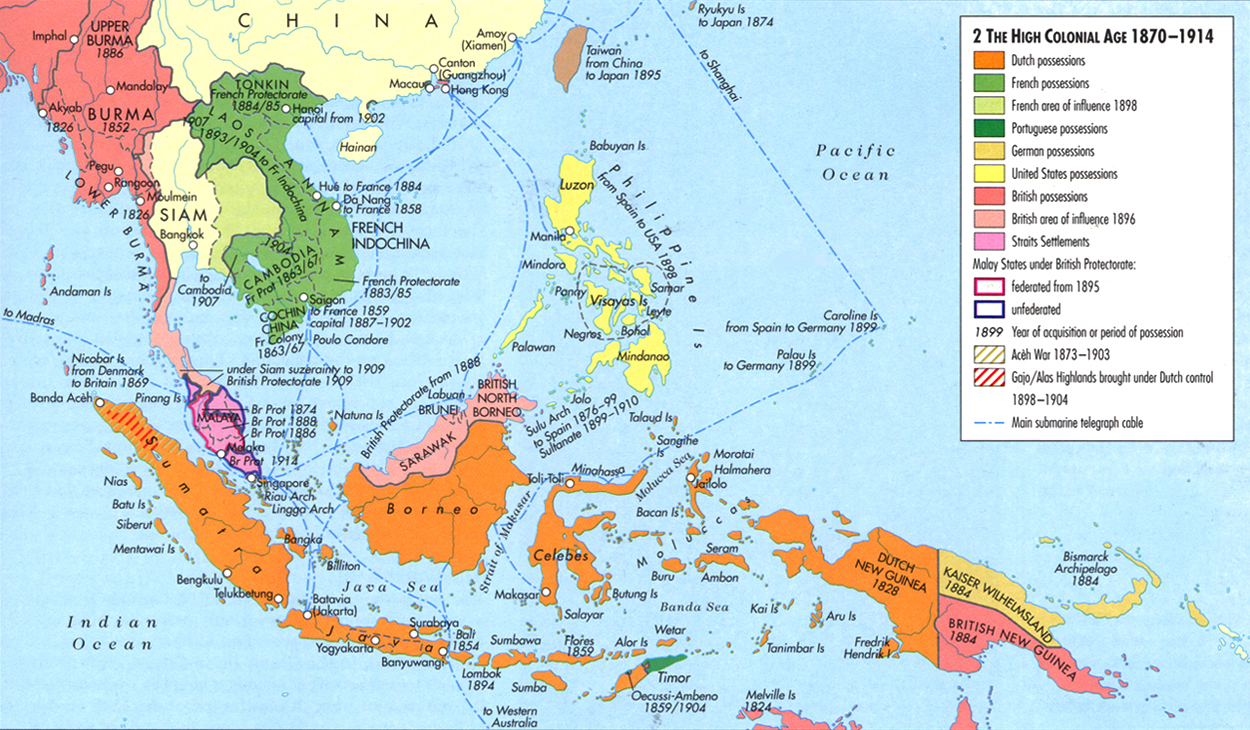“The European Makes Himself Ridiculous”: Teaching Southeast Asia in the Era of New Imperialism, c.1880 - c.1940
A discussion of teaching imperialism in Southeast Asia using case studies from Dutch East Indies, British Malaya, and French Indochina.

In last week’s post on South Asia during the era of New Imperialism, I discussed how textbooks frame British-ruled India in the late nineteenth century. When considering Southeast Asia in the same period, most textbooks rarely focus on the region. There may be passing references to the French in Vietnam or the British in Burma and Malaya, but there is not usually a standard narrative for the region.
For teachers who are less familiar with the history of Southeast Asia, Craig Lockard’s Southeast Asia in World History is a helpful starting point. In just over 200 pages, Lockard presents a clear historical overview of the region and how it fits into broader narratives of world history. In introducing this region to students, it helps to highlight how Europeans had established colonies in some areas (present-day Philippines and Java) in the sixteenth and seventeenth centuries. Meanwhile, Europeans did not establish colonies in most mainland Southeast Asia until the nineteenth century. There is also the case of Siam (present-day Thailand), whose rulers managed to prevent European conquest in the late nineteenth century. Drawing attention to these different histories of imperialism allows students to see Southeast Asia as a heterogenous region.
Given the limited coverage of imperialism in Southeast Asia, I want to highlight a few resources teachers can use to teach this topic. By using three case studies, students can see both the region’s diversity and how the region’s history fits into the global patterns of New Imperialism. Like other regions of Asia and Africa, European colonization intensively changed the societies of Southeast Asia. These case studies also allow teachers to center the experiences of colonized peoples in British Malaya, Dutch East Indies, and French Indochina and explore how imperialism affected nationalism, the economy, and urban life.

Dutch East Indies and Emerging Nationalism
When I first visited Indonesia in 2012, I learned about Raden Adjeng Kartini (1879-1904) from a mural I saw on Java. She was a young woman from an aristocratic Javanese family that helped the Dutch govern Java. Given her privileged upbringing, she was able to attend school as a child and learn Dutch. In her late teens and early twenties, Kartini wrote a series of letters to Dutch women. After her death from childbirth in 1904, Kartini’s letters were published in 1911. Over the twentieth century, Kartini has become a national hero in Indonesia.
This content is for Paid Members
Unlock full access to Liberating Narratives and see the entire library of members-only content.
SubscribeAlready have an account? Log in



